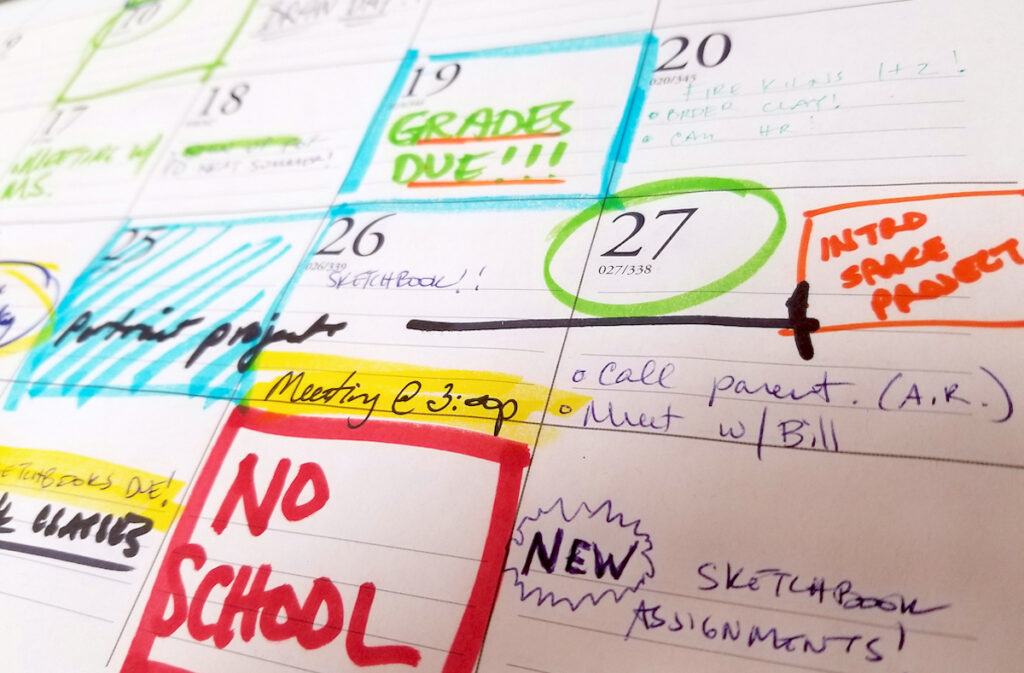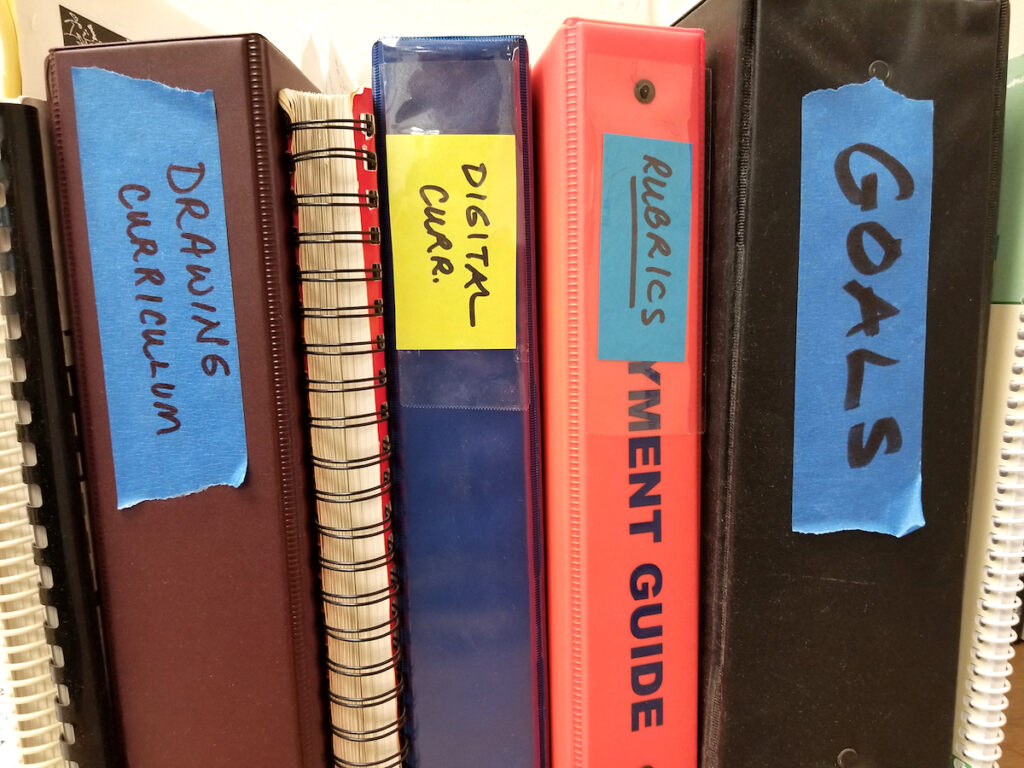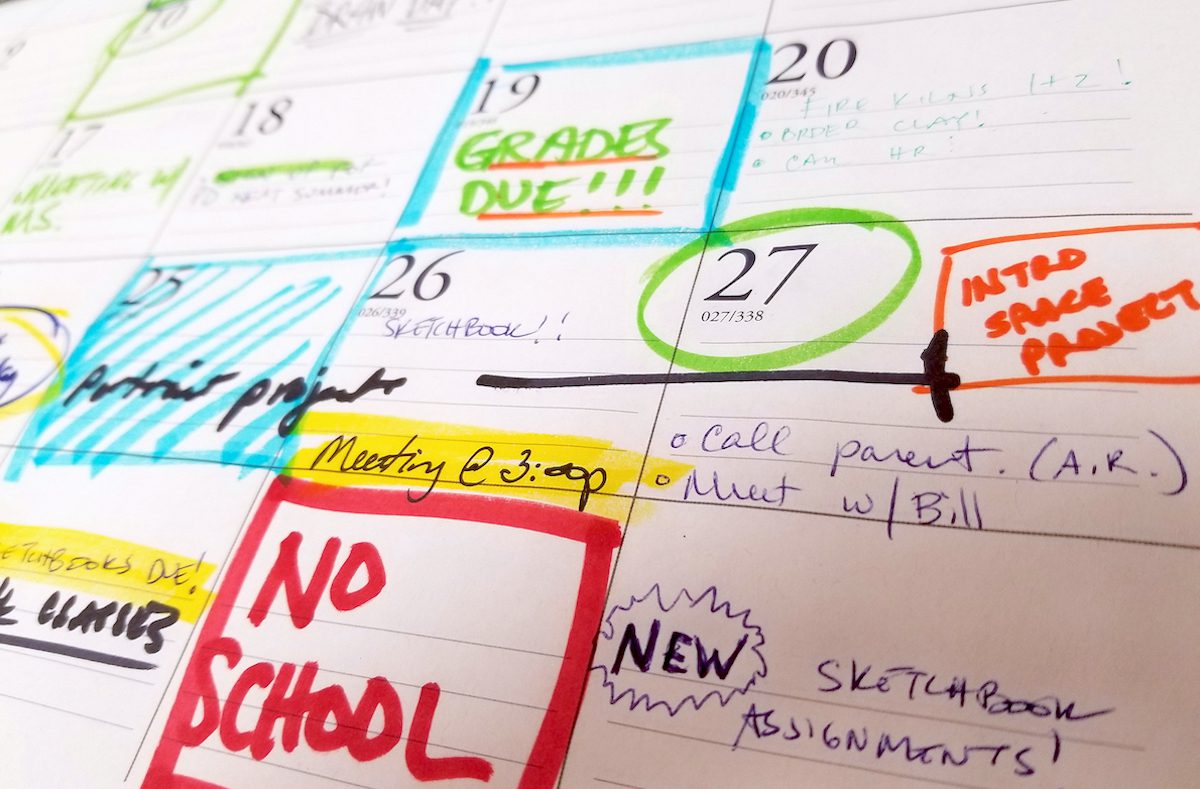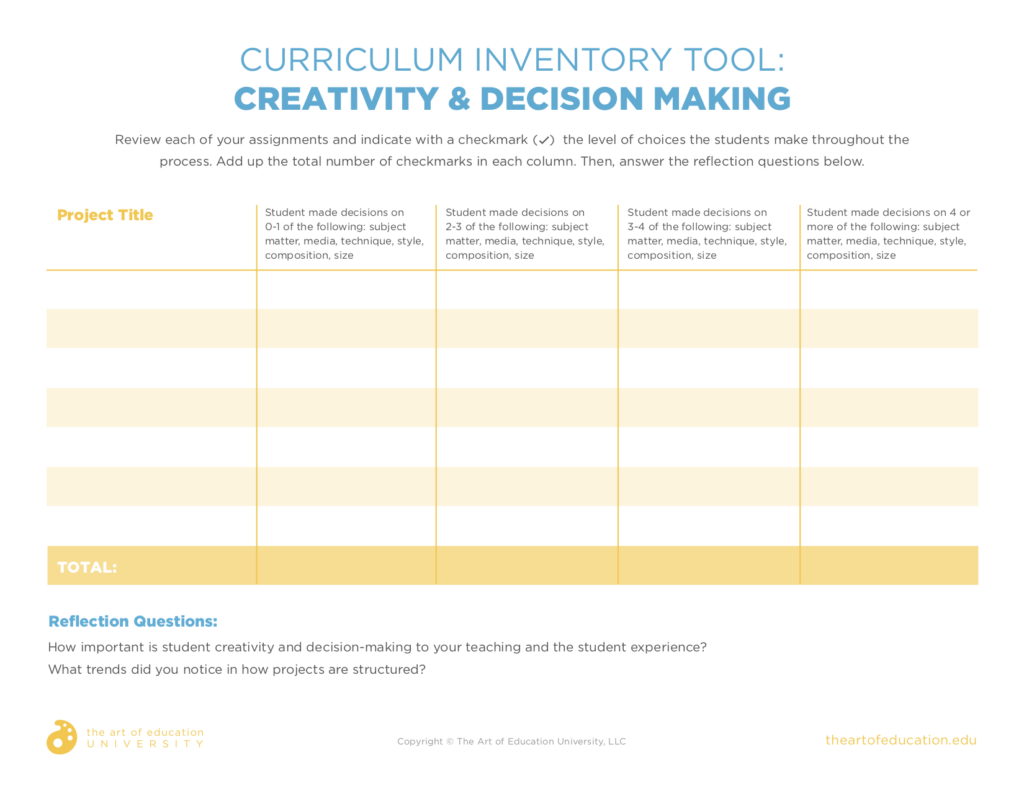It’s April. The final stretch. Winter break was a lifetime ago, and spring break is now over. No pit stops left as we plow through the rest of the school year. April is that point in the year where you’re so far into the race you barely remember the starting line, but the finish line isn’t yet in sight.
It is a challenging time, but also the perfect point in the year to hit the pause button to reassess and set yourself up to finish the year strong.

1. Review your goals.
Remember last June? The school year ended, and you already started thinking about the fall and mapping out some things you were going to differently this year. Or perhaps you had one of “those” years, and you booked it to your car on the last day, and it took until August to even think about what you wanted to try. Either way, think back to some of the goals you set for yourself to accomplish this year and review what remains on the to-do list. April is a perfect time to reassess because, good news, there’s still time to make it happen.
You might ask yourself questions like:
- What instructional strategies did you want to try with your students?
- Didn’t you swear you were going to revamp that rubric?
- How’s the supply closet organization coming along?
- What about that book the principal gave you that you swore you were going to read but haven’t made time to yet?
- What about goals you submitted to your principal or talked about during your observations?
For extra motivation, try and remember the “why” behind each goal. Revisiting the purpose and the benefits can help rekindle the excitement from when you first set the goal and remind yourself why it was necessary. Successfully completing our goals is also a way for us to feel a sense of satisfaction and purpose in our work and to follow through on our commitments.
2. Review your curriculum.

We all approach our curriculum a little differently, but one thing many of us share is a lack of accountability from others in implementing a specific curriculum. I know some teachers have to submit lessons plans regularly or provide students with a syllabus at the beginning of the year. But overall, would anyone really know if we ever got to a specific unit?
As an administrator, I have never once heard a student or parent upset because the teacher didn’t cover figurative sculpture. While having a lot of autonomy is a perk for many reasons, it’s important we develop our own system of checks and balances to ensure we are providing students with the curricular experience we intend. April is a great time to review the lessons you have completed with students and identify any gaps that need to be covered in the final stretch of classes.
Reviewing curriculum can also be a great way to highlight trends or implicit bias in our lesson planning. Meaning, what approaches to artmaking do you value without even realizing it? Analyzing each project through various lenses can help you inventory your curriculum from different perspectives to see if anything is being repeated too much or missing altogether.
The Curriculum Inventory Tool below is a great way to assess creativity and artistic decisions. All you need to do is fill in your project list and analyze how many artistic decisions students were making in the process. This exercise could also be used with elements and principles and artistic styles.
After you’ve inventoried your assignments, spend time reflecting and talking with colleagues about the results and what changes, if any, need to happen in the remaining time with students.
3. Start thinking about next year.
If you’ve made it here, congratulations on a great year thus far, your goals have been accomplished, and you have a good handle on what curriculum is left to cover with your students. Keep the momentum going, and shift some of your focus to next year. Believe it or not, the opportunity to make a lot of things happen for next year starts now. Your administration and/or colleagues are currently in the process of planning and making decisions that could impact you and your ability to make certain opportunities happen in the future. If you have an idea for next year, now is the time to start those conversations and get the planning rolling.
With whom can you collaborate?
Now is the perfect opportunity to connect with potential collaborators like colleagues, local artists, and/or organizations, and have everyone save the date before schedules fill up. This is your chance to plan the curricular collaboration you’ve always talked about like working with the math teacher for geometric sculptures or with a local photographer to teach your students a new style.
What do you need from your administration?
Sometimes our ideas can (and should) include advocating for the art department and our roles in the building. If you have an idea for how you or the arts can further benefit students, now is a great time to share it with your administration as decisions are being made for next year. This could include, but not be limited to, a new course, facilities, budget, professional development opportunity, etc. Administrators can only plan based off what they know. Asking for consideration on the front-end is a lot easier for them than asking for them to undo their plans in the fall.
Who is going to pay for it?
If your school can’t fund your idea, look for potential grant money. I always think about grants too late, and then I’m pedaling for money and regretting my poor planning. In addition to larger grants, many schools also offer grants through parent organizations and foundations.
Although the end is near, it’s never too late to make improvements. Take stock of where you are and see if there’s anything you can do to make the end of the year better for you and your students. If not, look ahead to next year to see how you might set yourself up for success!
What can you accomplish before the end of the year to end on a high note?
Who, in your building or community, can you connect with now for a great collaboration next year?
Magazine articles and podcasts are opinions of professional education contributors and do not necessarily represent the position of the Art of Education University (AOEU) or its academic offerings. Contributors use terms in the way they are most often talked about in the scope of their educational experiences.






